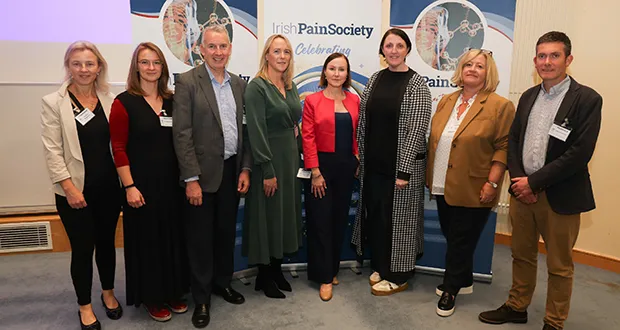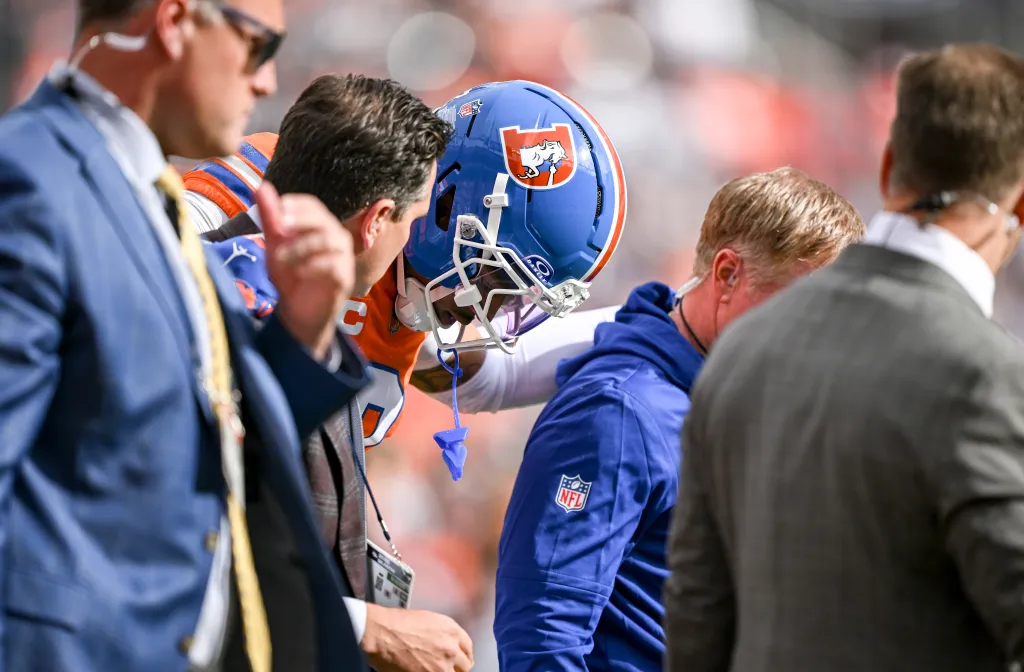Copyright imt

The 25th Annual Scientific Meeting (ASM) of the Irish Pain Society (IPS) took place on October 18 at Áras Moyola, University of Galway, with the central theme of ‘Pain Management, Research and Education in Low- and Middle-Income Settings’, reflecting the 2025 Global Year theme of the International Association for the Study of Pain (IASP). This meeting was also endorsed by the European Pain Federation (EFIC). IPS President, Dr Michelle Roche (Associate Professor in Physiology, and Co-Director of the Centre for Pain Research, University of Galway), welcomed all invited speakers, chairs and delegates to the meeting in this, the 25th Anniversary year of the IPS, and summarized some of the key achievements of the IPS over the past 25 years. Dr Roche thanked all of the invited speakers and panel discussants for making the trip to Galway from near and far to present their latest pain research and practice. She thanked the meeting exhibitors for their generous sponsorship, the members of the IPS Council, and administrators Nicola Knowles and Juliana Davis Gonzalez for their support and assistance with organising the meeting. Dr Roche then introduced the recently appointed President of the University of Galway, Prof David Burn, who officially opened the meeting. Prof Burn extended a very warm welcome to all speakers. chairs and delegates visiting the University of Galway. In his opening address, Prof Burn, who is a neurologist, emphasised the major unmet clinical need that is chronic pain, with at least one in five people suffering from the condition. He remarked on the major contributions that the IPS and its members have made in advancing research, education and management of pain in Ireland and beyond. He also noted the significant contribution that members of University of Galway’s Centre for Pain Research had made to the IPS over its 25-year history. Prof Luis Garcia-Larrea (Lyon Neuroscience Centre and current President of the European Pain Federation EFIC) gave the plenary lecture at the conference, introduced by IPS President Dr Roche. Prof Garcia-Larrea’s talk ‘Cortical Stimulation for Chronic Pain: from anecdote to evidence’ covered repetitive transcranial magnetic stimulation (rTMS) and transcranial direct current stimulation (tDCS). He gave a comprehensive overview of the development of both methods, starting from discoveries in the 1960s where brain stimulation was shown to modulate cortical activity to recent clinical studies demonstrating efficacy in providing pain relief to patients through a tailored approach, not overlooking research in the intervening decades that often had a mixed quality of evidence. For rTMS, Prof Garcia-Larrea noted that it was introduced for the first time this year as a third-line non-pharmacological treatment option for neuropathic pain based on updated 2025 recommendations by the Neuropathic Pain Special Interest Group (NeuPSIG) of IASP. He subsequently highlighted the advantages that tDCS might have, with reference to the STIMADOM project from his own laboratory, whereby patients are able to receive stimulation at home using a portable kit after initial training in a hospital. While the primary stimulation site for these methods had been the motor cortex, there was also mention of the insular cortex as a new potential target for treatment. Prof Garcia-Larrea ended his talk with a quote from the French poet Paul Valéry “What is simple is false. What is complex is unusable”, adding that the work of clinicians and researchers requires navigating in between. The first session following the plenary was chaired by Dr Joanne O’Brien Kelly (Advanced Nurse Practitioner, Beaumont Hospital and past IPS president). Dr Nadja Nestler (Paracelsus Medical University and president-elect of the German Society for Pain Medicine) sought to provide a nursing perspective in her talk on the area of pain management and research. She called attention to the new 2025 definition of nursing from the International Council of Nurses (ICN), which promotes a combination of science-based disciplinary knowledge, technical capability, ethical standards and therapeutic relationships. Thus, nurses are uniquely placed to play a central role in the assessment and management of acute and chronic pain in many circumstances. Dr Nestler presented a framework of person-centered care, where patients should be involved in decision-making and supported to enable self-care competence. Seeing patients as equal partners, educating patients on pain treatments and communication also form important aspects of nursing. She emphasised that pain nursing is evidence-based practice, providing some examples where nurses could contribute to non-pharmacological interventions such as the use of music or virtual reality in a perioperative setting, and highlighted that additional nursing-specific research is needed to show which tasks are helpful or needed. Prof Kevin Vowles (Queen’s University Belfast) shared insights from three decades of clinical psychology experience, emphasising that chronic pain is a biopsychosocial problem rather than purely biological. Pain intensity often fails to reflect underlying causes, and behaviour plays a central role in patient outcomes. Recent data from a study in Belfast showed greater pain impact in socio-economically deprived areas. Prof Vowles highlighted the importance of shifting focus from pain control to values-based living, enabling patients to live meaningful lives despite pain. Interdisciplinary rehabilitation achieves better, longer-lasting outcomes than unidisciplinary approaches, underscoring the need for rehabilitation-focused, values-driven chronic pain care. In session two, Chaired by Dr Conor Hearty (Dean of the Faculty of Pain Medicine, and Consultant in Pain Medicine at the Mater Misericordiae University Hospital, Dublin), Dr David Moore, Consultant in Pain Medicine at Beaumont Hospital Dublin, shared insights into his journey developing an integrated pain management community service at Beaumont Hospital. The service, named the iPainCentre, comprises a multidisciplinary team including a psychologist, a physiotherapist, a nurse specialising in pain management, and administrative staff. Dr Moore oversees the service, though the core delivery is led by the team members. The project was conceptualised in 2021, with the central idea being that early multidisciplinary pain management should be delivered within the community, in close liaison with GPs and tertiary hospital services. In 2022, the initiative received support from the Sláintecare Integration Innovation Fund (SIIF). Initially, the team focused on referrals for lower back pain, sciatica, and fibromyalgia. The service became operational in 2023. The team’s work is guided by a clear and unified vision grounded in the biopsychosocial model of pain care, emphasising living well despite the presence of chronic pain. The iPainCentre serves North County Dublin, with the majority of patients aged between 50 and 70 years where chronic non-specific lower back pain is the most common diagnosis. To date, the iPainCentre has treated approximately 650 patients and is estimated to have achieved annual savings of around €950,000. More information about the service can be found here. Session two concluded with a panel discussion on Trauma-Informed Pain Care. The panellists included Prof Kevin Vowles (Professor of Psychology, Queen’s University Belfast), Dr David Moore (Consultant in Pain Medicine, Beaumont Hospital), Ms Roisin Hosie (Physiotherapist), and Niamh Walsh (representing Chronic Pain Ireland and a person with lived experience of pain). The discussion began with an exploration of trauma in the context of chronic pain. Each panellist shared their perspectives on what trauma means in relation to chronic pain. It became clear that trauma can be understood as a “wound” (reflecting the original meaning of the word), affecting individuals in different ways. The audience contributed with several thought-provoking questions, leading to a rich and engaging discussion. Ms Walsh recommended the book Trauma in Healthcare for further reading. One audience member raised a particularly relevant question on how best to care for war victims from different countries who are now being treated for chronic pain – a concern of growing significance given current global circumstances. Session 3 consisted of a rapid-fire short oral session chaired by Dr Olga Baron (Assistant Professor, School of Biomolecular and Biomedical Science, University College Dublin) and hosted by the Irish Pain Research Network. This session, primarily delivered by early-career researchers, gave a platform for the strong research ongoing across the island of Ireland. It covered a breadth of basic science and clinical pain research, featuring topics such as development of a novel therapeutic for osteoarthritis pain, patient-controlled analgesia with relevance to patient education and satisfaction, self-management of shoulder pain, antinociceptive effects of the phytocannabinoids cannabidiol and cannabigerol in a model of incisional wound pain, use of virtual reality in physiotherapy pain science education, the prevalence of work-related musculoskeletal disorders among nurses and midwives in Irish hospitals, and association of baseline circulating levels of endocannabinoids and N-acylethanolamines with individual differences in heat pain sensitivity. Prof David Finn (Established Professor of Pharmacology and Therapeutics, Co-Director of the Centre for Pain Research, University of Galway and Past-President of the IPS) chaired the fourth session. Prof Harriët Wittink (HU University of Applied Sciences Utrecht) presented on ‘Physical Activity Patterns and Pain’. Her talk opened with a concern that physiotherapists might have, whereby people in pain will adjust their behaviour to escape pain and over time this becomes a pattern, which may in turn lead to persistent pain. This was followed by examining the three distinct patterns of activity that people in chronic pain often use — avoidance, persistence and pacing, including their long-term outcomes. Prof Wittink flagged the issue of the content validity of questionnaires which has been a neglected area, where a questionnaire should accurately and fully measure what is intended to be worthwhile. Doing so requires the involvement of patients, a sentiment that echoes points made in several talks at the conference, in addition to the Delphi method to reach a consensus from a multidisciplinary focus group. The audience were also treated to a sneak peek of ongoing research where accelerometers could be used to provide an objective measure of activity patterns, in contrast to subjective questionnaires. This generates a barcode-like output for visualising and discerning a patient’s activity throughout the day, which may offer new possibilities for diagnostics. Prof Jeffrey Mogil (E.P. Taylor Professor of Pain Studies, Department of Psychology, McGill University, Montreal, Canada) delivered a comprehensive talk titled “Pain, Sex, and Death”, exploring sex differences in pain perception and mechanisms. He began by addressing the long-debated question, “Who is more sensitive to pain – men or women?”. He referenced early work by Karen Berkley (1997), who reviewed chronic pain syndromes and demonstrated that women are disproportionately represented in nearly all categories of chronic pain. However, he emphasized that this disparity might reflect not only biological differences in pain sensitivity but also sociocultural and behavioural factors, such as healthcare-seeking tendencies. He then discussed the disconnect between clinical populations and preclinical research, highlighting that for decades, pain studies relied almost exclusively on young male rodents, with up to 80 per cent of studies excluding females. He illustrated the consequences of this bias through the case of Morphidex®, a failed analgesic combining morphine and dextromethorphan. Despite promising results in male animal models, the drug showed no benefit in clinical trials, likely because the mechanism of action differed between sexes, a difference that would have been evident had female animals been included. Building on his lab’s own contributions, Prof. Mogil showed that in rodents, microglia mediate neuropathic pain behaviour in males, whereas T-cells are the critical drivers in females. He also emphasized that chronic pain could shorten life, citing his late mentor Dr. John C. Liebeskind’s work and epidemiological data showing that patients with chronic pain are effectively six years biologically older. Finally, he introduced new, unpublished research examining the influence of social context on pain behaviour in mice. Male mice tended to conceal pain-related behaviours, whereas females displayed them more openly Prof. Mogil proposed that while this may reflect biological sex differences, it could also represent gendered behavioural differences shaped by social context, potentially the first evidence of a gender-like phenomenon in non-human animals. The meeting programme also included a series of lively parallel discipline-specific educational meetings of (1) Pain Nurses (on transitional pain nursing to prevent chronic postsurgical pain), (2) Pain Physiotherapists (on the role of physiotherapists in identifying non-physical barriers to recovery from persistent pain), (3) Pain Psychologists (on the role of psychology in chronic pain services; review, development and the model of care), (4) Basic Scientists (on the future of animal models, and ‘Omics’ approaches in pain research), as well (5) as a workshop on Pain Medicine Procedures with a focus on the neurophysiology of chronic pain. Invited speakers participated in these meetings and workshops and provided valuable international insight and discussion. Researchers also presented their research in poster format, with a record number of posters (54) on display highlighting the excellent quality of pain research being conducted at present across the island of Ireland. The closing session was delivered by Prof Andrew Rice, President of the International Association for the Study of Pain (IASP), who warmly congratulated the IPS on its 25th anniversary, celebrating its growth into a multidisciplinary leader in pain research and clinical care. He highlighted IPS’s longstanding contributions to both the European Pain Federation (EFIC) and IASP, and recognized its members for their active engagement, leadership, and dedication to advancing pain research, education, and clinical practice. He noted the Society’s support for education, professional development, and the dissemination of best practices, ensuring that its influence extends beyond Ireland to the global pain community. Prof Rice also outlined IASP’s initiatives, including task forces on environmental sustainability, laboratory animal welfare, and research integrity, the Global Year programs promoting pain care worldwide, and support for early career researchers and clinicians through mentorship, networking, grants, fellowships, and programs such as pain schools and camps, all aimed at advancing research, education, and international collaboration in pain science. He concluded by expressing confidence that IPS will continue to be a major force in advancing pain science and clinical care and looked forward to their contributions at the next World Congress in Bangkok, highlighting opportunities for continued collaboration, education, and leadership within IASP. Dr Roche closed the meeting by thanking all the speakers, chairs, panelists, poster and short oral presenters and delegates again for their participation and engagement in what was a momentous occasion for the Irish Pain Society – the 25th Anniversary. A number of prizes were awarded during the meeting for best short oral and posters presentations. This year saw the inclusion of an additional award, the Prof Laserina O’Connor Medal for the best presentation from a nurse or advanced nurse practitioner. Prof O’Connor was the first nurse to become President of the IPS (2013-2015). She worked tirelessly to promote the IPS and pain management in Ireland, was recognised for her commitment to excellence in nursing care and for developing and leading several advanced nursing educational programmes. Sadly, she passed away in 2022, however the IPS is pleased to establish this new award in recognition of Prof O’Connor’s valuable contribution to the society and to advance nursing education in Ireland. Best Clinical Short Oral: Enobong Gideon Asuquo, School of Nursing and Midwifery, University of Limerick Title: The prevalence of work-related musculoskeletal disorders among nurses and midwives in Irish hospitals. Runner-Up Short Oral: Maria C. Redmond, Pharmacology and Therapeutics, School of Medicine, Galway Neuroscience Centre, Centre for Pain Research, CÚRAM, University of Galway Title: Antinociceptive effects of cannabidiol and cannabigerol in an incisional wound model. Dr Hugh Raftery Prize (for NCHDs): Winner: Hannah Balytska, Department of Anaesthesia, Limerick University Hospital Title: Pain in silence: Auditing distress and analgesia in neurodiverse children undergoing surgery. 2nd Place: , School of Medicine, University College Cork Title: A review of Paracetamol dosing at Mercy University Hospital. Pain management in major surgery: are we better intraoperatively or postoperatively? 3rd Place: Nabiha Chaudhary, Department of Anaesthesiology, Our Lady of Lourdes Hospital, Drogheda. Title: Evaluating post-operative opioid consumption in elderly hip fracture patients who received regional anaesthetic block vs no regional nerve anaesthetic block. The Prof. Laserina O’Connor Prize (inaugurated at this 2025 IPS ASM): Patricia Molyneaux, Department of Pain Medicine, St. John’s Hospital, St. John’s Square, Limerick Title: Development of an algorithm for the management of acute pain in medical inpatients aged 65yrs and older in the acute hospital setting. Best Clinical Research Poster: Winner: Paul O’Reilly, Centre for Pain Research and School of Psychology, University of Galway. Title: Exploring the perspectives of adolescents, parents and healthcare professionals about the utility of a pain self-management smartphone application (ICANCOPE POSTOP) in the context of adolescent idiopathic scoliosis and corrective surgery. 2nd Place: Maura McCarron, School of Psychology, Queen’s University Belfast, N. Ireland Title: Understanding the experiences of participants in a digital pain education programme – an interpretative phenomenological analysis. 3rd Place: Annabelle Morris, UCD School of Public Health Physiotherapy and Sports Science, University College Dublin, Dublin Title: Enhancing pain science education in medical and physiotherapy students using virtual reality (VR). Best Non-Clinical Research Poster: , Physiology, School of Pharmacy and Medical Sciences, Galway Neuroscience Centre, Centre for Pain Research, University of Galway, Galway Title: A noxious inflammatory insult elicits social impairments and altered inflammatory responding in the valproic rat model of autism. Dr Kevin Ng, PhD, Postdoctoral Researcher in Pharmacology and Therapeutics, Centre for Pain Research, and the Research Ireland Centre for Research in Medical Devices (CÚRAM), University of Galway. Dr Daniela Rodrigues Amorim, PhD, Postdoctoral Researcher in Physiology, Centre for Pain Research, and the Research Ireland Centre for Research in Medical Devices (CÚRAM), University of Galway. Dr Zaeem Siddique, MD, Consultant in Pain Medicine and Anaesthesiology, Our Lady of Lourdes Hospital, Drogheda Prof David Finn, PhD, Established Professor of Pharmacology and Therapeutics and Co-Director of the Centre for Pain Research, University of Galway. Dr Michelle Roche, Associate Professor of Physiology and Co-Director of the Centre for Pain Research, University of Galway.



